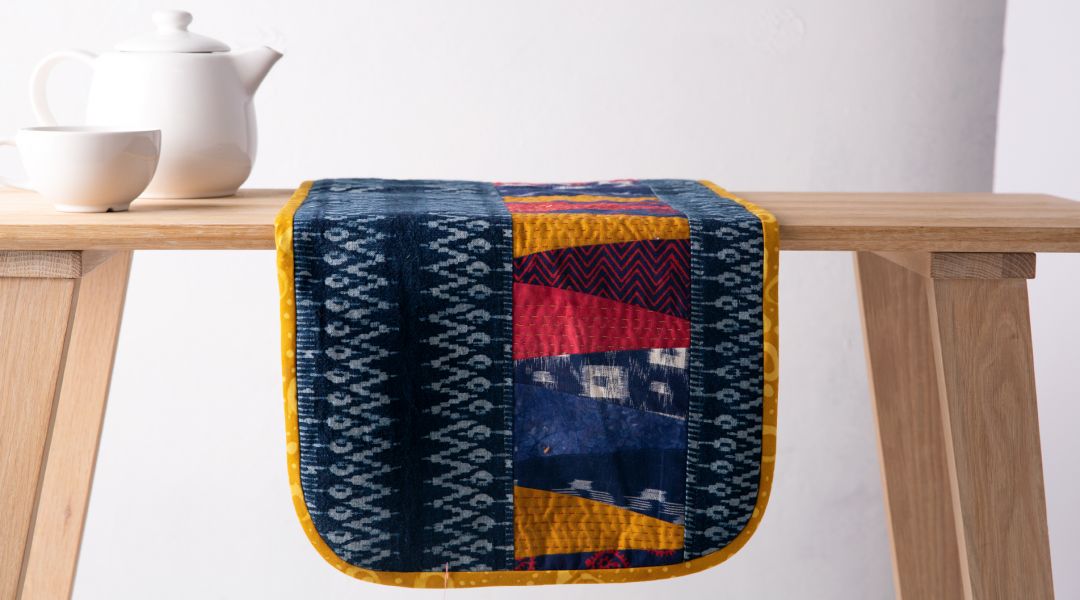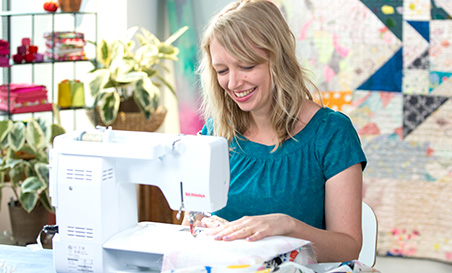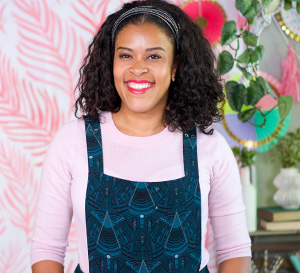
|
01:03
|
|
00:46
|
|
09:17
|
|
07:19
|
|
04:00
|
|
03:53
|
|
12:36
|
- 1/2 yd of 44" wide cotton for the top
- Assortment of colors of cotton fabrics cut to 6.5" width strips to make Dresden wedges, approximately 50 wedges total for top and bottom (or use 6.5" scraps)
- 1 yd of 44" wide cotton for the back in a complementary color
- 1 yd of 22" heatproof batting
- 1 yd fabric to make bias tape, or if using pre-packaged, purchase 3 yards bias binding
- Sewing machine with matching thread
- Hand-sewing needle
- Rotary cutter
- Thread snips
- Iron and ironing surface
- Scissors
- Pins
- 18 degree Dresden wedge acrylic tool
- Insulated batting
- 6" saucer or plate
- Quilting clips (optional)
- Thimble or thimble pad (optional)
- Marking pencil (optional)
- Make a Dresden wedge
- Work big-stitch hand quilting
- Trim edges with a rotary cutter
- Make bias tape
- Attach bias to curved corners
What you’ll get:
- A 6-part series of easy-to-follow video lessons on how to make a beautiful, reversible table runner
- 8 HD video lessons you can access online anytime, anywhere
- Detailed supply list
- Step-by-step instructions by sewist Michele Muska
- The ability to leave comments, ask questions and interact with other students





I would personally prefer it if Ms. Muska showed the sides first before she shows the top so that I can see where she is sewing, because I wasn't sure how she began the stitches.
Because I'm an absolute beginner, I do appreciate that she showed us how to do our solid back for the table runner vs. the custom piece meal when she did her backing the first time. That confused me, but that's probably suited for more experienced sewers.
Definitely informative. Thank you! :D
Liked the project, but hit some roadblocks like dimensions not provided for strips left and right of the of dresden strip created for top of runner. Also no dimensions found for dresden strips cut and side fabric strips for bottom. Also, time to complete project really off. It took much more time to complete and that if using comercial bias binding. I am using it for a library class project. Also, only found this project to make a table runner.
Not a fan of curves, however I am looking forward to trying this on my next tablerunner. So easily explained, I think I just might be able to pull this off!






















